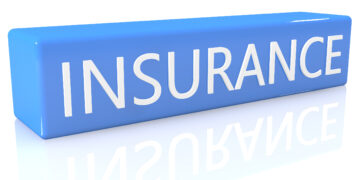Understanding the Fundamentals of Property Investment
Property investment, while potentially lucrative, requires a solid understanding of core principles. Grasping these fundamentals is crucial for making informed decisions and mitigating risks.
1. Defining Investment Goals
Before diving into property investment, it’s vital to define clear goals. Are you seeking long-term capital appreciation, consistent rental income, or a combination of both? Your objectives will influence the type of property you choose, the location you target, and your overall investment strategy. Consider your risk tolerance, time horizon, and financial resources when setting these goals. For instance, a younger investor might prioritize growth, while someone closer to retirement may focus on stable income.
2. Understanding Key Financial Metrics
Several financial metrics are essential for evaluating property investments. Net Operating Income (NOI) represents the property’s revenue after deducting operating expenses, excluding mortgage payments. Capitalization Rate (Cap Rate) is calculated by dividing the NOI by the property’s value, providing an estimate of the potential rate of return. Cash flow reflects the actual cash generated after all expenses, including mortgage payments, are paid. Understanding these metrics helps in comparing different investment opportunities and assessing their financial viability.
3. Location, Location, Location
The adage “location, location, location” remains paramount in property investment. Factors such as proximity to amenities (schools, shopping, transportation), crime rates, job growth, and future development plans significantly impact property values and rental demand. Researching local market trends, demographic shifts, and zoning regulations is crucial for identifying promising investment areas. Investing in a location with strong fundamentals increases the likelihood of long-term appreciation and consistent rental income.
4. Due Diligence and Risk Management
Thorough due diligence is critical before acquiring any property. This includes conducting a professional property inspection to identify potential structural issues or necessary repairs. Reviewing title reports to ensure clear ownership and identifying any easements or encumbrances is also important. Understanding potential risks, such as vacancies, property damage, and changes in market conditions, and developing strategies to mitigate them are essential components of responsible property investment.
Navigating Mortgage Rates and Their Impact on Real Estate Financing
Understanding mortgage rates is crucial for anyone involved in real estate financing, as they significantly influence affordability and investment returns. These rates fluctuate based on economic conditions and lender policies.
1. Understanding Mortgage Rate Basics
A mortgage rate is the interest rate a lender charges for a mortgage loan. It’s typically expressed as an annual percentage rate (APR), which includes the interest rate plus other fees. Factors influencing mortgage rates include the Federal Reserve’s policies, inflation, and the overall health of the economy. Fixed-rate mortgages have interest rates that remain constant throughout the loan term, while adjustable-rate mortgages (ARMs) have rates that may change periodically based on market conditions.
2. Impact on Home Affordability
Mortgage rates directly affect how much home a buyer can afford. Even a small change in the rate can significantly impact monthly payments and the total cost of the loan over its lifetime. For example, a higher interest rate means a larger portion of each payment goes towards interest, reducing the amount that pays down the principal. This can limit the size of the loan a buyer qualifies for and ultimately, the price range of homes they can consider.
3. Refinancing and Rate Changes
When mortgage rates decline, homeowners often consider refinancing their existing mortgages to secure a lower rate. Refinancing can reduce monthly payments, shorten the loan term, or switch from an ARM to a fixed-rate mortgage for greater stability. However, it’s important to factor in refinancing costs, such as appraisal fees and closing costs, to determine if the savings outweigh the expenses. The decision to refinance depends on the homeowner’s financial goals and the difference between their current rate and the available rates.
Strategies for Effective Down Payment Management
Saving for a down payment can feel daunting, but with a strategic approach, it’s an achievable goal. A well-managed down payment not only makes homeownership possible but also impacts mortgage terms and long-term financial stability.
| Strategy | Description | Potential Benefit | Potential Drawback |
|---|---|---|---|
| Automated Savings Transfers | Set up recurring transfers from your checking account to a dedicated savings account specifically for your down payment. | Consistent savings, reduced temptation to spend funds, and increased likelihood of reaching your goal. | Requires careful budgeting to ensure sufficient funds remain in your checking account to cover daily expenses. |
| Cutting Discretionary Spending | Identify and reduce non-essential expenses, such as dining out, entertainment, and subscription services. | Frees up funds for savings, develops healthier spending habits, and accelerates down payment accumulation. | May require lifestyle adjustments and disciplined spending habits. |
| Exploring Down Payment Assistance Programs | Research and apply for down payment assistance programs offered by local, state, or federal agencies. | Provides grants or low-interest loans to help cover down payment costs, making homeownership more accessible. | Eligibility requirements may be strict, and funding may be limited. |
Data Source: Bankrate, Mint.com, HUD.gov, 2024-2025
1. Setting Realistic Savings Goals
Begin by determining the desired down payment amount based on your target home price and mortgage options. Research different loan types (e.g., conventional, FHA) and their respective down payment requirements. Break down the total savings goal into smaller, manageable monthly or bi-weekly targets. Use online calculators and budgeting tools to track progress and adjust savings strategies as needed. Regularly review your savings plan to ensure it aligns with your financial situation and market conditions.
2. Automating Your Savings
Automation is key to consistent saving. Set up automatic transfers from your checking account to a dedicated savings account specifically earmarked for your down payment. Consider using high-yield savings accounts or certificates of deposit (CDs) to maximize interest earnings on your savings. Schedule transfers to coincide with paydays to ensure funds are available. Regularly monitor your savings account balance to track progress and identify any potential issues.
3. Reducing Expenses Strategically
Identify areas where you can cut back on discretionary spending. Analyze your monthly expenses and identify non-essential items or services that can be reduced or eliminated. Consider negotiating lower rates on existing bills, such as internet or cable. Cook more meals at home instead of eating out. Explore free or low-cost entertainment options. The savings from these small changes can add up significantly over time.
4. Exploring Down Payment Assistance
Research down payment assistance programs (DAPs) offered by local, state, and federal agencies. These programs provide grants or low-interest loans to eligible homebuyers. Eligibility requirements vary depending on the program, but often include income limits, first-time homebuyer status, and geographic restrictions. Carefully review the terms and conditions of each program to ensure it aligns with your financial goals.
5. Considering Alternative Income Streams
Explore opportunities to supplement your income through side hustles or part-time work. Consider freelancing, online tutoring, or driving for a ride-sharing service. Sell unused items online or at consignment shops. Any extra income earned can be directly allocated to your down payment savings. Be sure to factor in any tax implications associated with additional income.
Decoding Closing Costs: Essential Considerations for Investors
Closing costs are the expenses over and above the property’s price that buyers and sellers usually incur to complete a real estate transaction. Understanding these costs is crucial for investors to accurately assess profitability and manage finances effectively.
1. Understanding the Components of Closing Costs
Closing costs typically include a variety of fees and expenses. These can range from appraisal fees, which determine the fair market value of the property, to title insurance, which protects against potential ownership disputes. Loan origination fees, charged by lenders for processing the mortgage, and recording fees, paid to the local government to register the property transfer, are also common. A clear understanding of these components allows investors to anticipate and budget for these expenses.
2. Negotiating Closing Costs
While some closing costs are fixed, others are negotiable. Buyers can negotiate with sellers to cover certain expenses, such as title insurance or transfer taxes, especially in a buyer’s market. Additionally, shopping around for different lenders and service providers, such as appraisers or title companies, can lead to lower fees. Savvy negotiation can significantly reduce the overall financial burden of closing costs.
3. Impact on Investment Returns
Closing costs directly impact the return on investment (ROI) for real estate ventures. Higher closing costs reduce the initial capital available for the property and increase the overall cost basis. This can affect the profitability of the investment, particularly in the short term. Investors need to carefully factor in closing costs when calculating potential returns to make informed decisions.
Q&A
Question 1: What are the key financial metrics crucial for evaluating property investments, and how are they calculated?
Answer: Three key metrics are Net Operating Income (NOI), Capitalization Rate (Cap Rate), and Cash Flow. NOI is calculated by subtracting operating expenses from revenue (excluding mortgage payments). Cap Rate is NOI divided by the property’s value, estimating potential return. Cash flow represents actual cash generated after all expenses, including mortgage payments. Understanding these helps compare investment opportunities and assess viability.
Question 2: How do mortgage rates impact home affordability, and what strategies can potential homebuyers employ to navigate fluctuating rates?
Answer: Mortgage rates directly influence affordability. Higher rates increase monthly payments and the total loan cost, limiting the loan amount and price range of homes a buyer can afford. Potential homebuyers can explore different loan types (e.g., 15-year vs. 30-year fixed rate, ARMs), shop around for lenders to compare rates, and consider strategies like increasing their down payment to qualify for a better rate. Monitoring rate trends and refinancing when rates decline are also options.
Question 3: What are some effective strategies for managing down payment savings, and how can potential homebuyers overcome the challenges of saving for a down payment?
Answer: Strategies include automating savings transfers, cutting discretionary spending, exploring down payment assistance programs, and considering alternative income streams. Overcoming challenges involves setting realistic savings goals, tracking progress using budgeting tools, and consistently adhering to a savings plan. Down payment assistance programs can significantly reduce the initial financial hurdle.
Question 4: What are the key components of closing costs in real estate transactions, and how can investors negotiate to minimize these expenses?
Answer: Closing costs include appraisal fees, title insurance, loan origination fees, and recording fees. While some are fixed, others are negotiable. Investors can negotiate with sellers to cover certain costs, especially in a buyer’s market. Shopping around for lenders and service providers can also lead to lower fees. Careful budgeting and anticipating these costs are crucial for accurately assessing investment profitability.
References:
- https://harris-sliwoski.com/blog/u-s-real-estate-investment-for-foreign-investors-the-west-coast/
- https://www.rentastic.io/blog/multi-family-real-estate-investment-trends-2025
- https://www.nerdwallet.com/article/investing/5-ways-to-invest-in-real-estate
- https://financebuzz.com/guide-to-starting-real-estate-investing
- https://apxnproperty.com/top-financing-options-for-property-investment/






